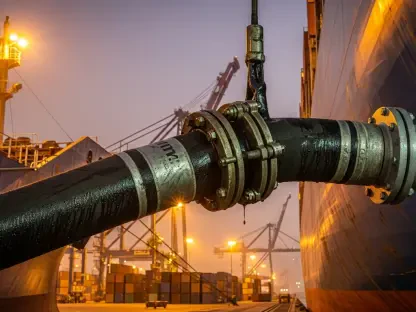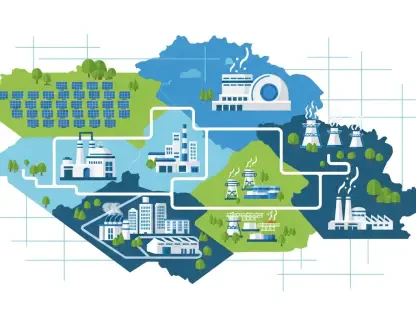In today’s discussion, we dive into the intricacies of China’s energy landscape with Christopher Hailstone, a seasoned expert in energy management, renewable energy, and utilities. With recent developments in China’s import quotas for naphtha, Christopher offers invaluable insights into the demand dynamics and geopolitical factors impacting this sector.
Can you explain the recent decision by China to nearly double its 2025 naphtha import quotas?
China’s decision to nearly double its 2025 naphtha import quotas is primarily driven by a combination of domestic demand growth and external supply challenges. The country is facing disruptions in supplies of alternative feedstocks like propane and ethane from the U.S., compounded by rising opportunities with new cracker startups coming online. To ensure a steady supply for its petrochemical industry, China has increased the import quotas, reflecting its strategic pivot to secure sources amid volatile market conditions.
What are the main factors driving the increased demand for naphtha in China?
The rise in demand for naphtha in China is fueled by several key factors. Firstly, the petrochemical industry’s expansion with new cracker facilities requires a reliable feedstock supply like naphtha. Furthermore, geopolitical tensions, such as the U.S.-China trade war, have disrupted traditional supply lines of cheaper alternatives, making naphtha a more stable and attractive option. These elements combined are pushing China to bolster its import volumes.
How has the disruption in U.S. supplies of alternatives like propane and ethane affected China’s naphtha imports?
Disruptions in U.S. shipments of propane and ethane, which have historically been cheaper alternatives, have considerably impacted China’s reliance on naphtha. Trade tensions and higher tariffs on U.S. imports made these alternatives less viable, redirecting China’s import strategies towards naphtha. This shift is also facilitated by China’s internal policies to mitigate risks from external supply chains.
What role do new cracker startups play in the rising demand for naphtha in China?
New cracker startups in China are pivotal to the increasing demand for naphtha. These facilities, which convert raw materials into valuable petrochemicals, have expanded in number and capacity, necessitating a steady and significant supply of naphtha. The investments in such infrastructure reflect China’s ambition to enhance its petrochemical output and reduce dependency on imports for end-products.
How does the Chinese government typically handle the issuance of naphtha import quotas?
The Chinese government administers naphtha import quotas through a tightly controlled process, generally issuing allocations annually to select companies. These quotas are not publicly announced; instead, they are distributed based on strategic considerations. This method allows the government to regulate import volumes and balance the needs of the domestic market with broader economic objectives.
Which companies were allocated the new naphtha import quotas, and what were their specific allocations?
State-owned entities like Sinopec and CNOOC were among the notable recipients of the new quotas. Sinopec received an allocation of 2.49 million tons, while CNOOC was allocated 2.76 million tons. This indicates the government’s strategy to prioritize larger, established companies with significant roles in the domestic energy market, ensuring that these entities have the resources needed to meet demand.
Why might some companies decline to comment on their allocation when asked by media sources?
Companies often refrain from commenting on their allocations for strategic and competitive reasons. Publicly discussing specific allocations might reveal sensitive business strategies or market positions. Moreover, regulatory considerations and ongoing negotiations with government bodies may also limit what companies can disclose in public forums.
How have recent supply constraints and tariffs affected the competitiveness of LPG and ethane compared to naphtha cracking?
Supply constraints and recent tariffs have significantly affected the competitiveness landscape between LPG, ethane, and naphtha. Tariffs have increased costs for importing U.S. alternatives, making them less competitive. In contrast, naphtha cracking has gained favor due to its availability and cost efficiency in the current market climate, catalyzed by China’s strategic import increases.
Can you detail how the U.S.-China trade war disrupted the global propane market?
The U.S.-China trade war significantly impacted the global propane market by altering the traditional trade routes. China imposed higher tariffs on U.S. propane, making it almost unfeasible for imports. Consequently, Chinese buyers sought alternatives from the Middle East, while U.S. suppliers re-routed their exports to other regions, notably Europe and elsewhere in Asia, drastically reshaping market dynamics.
How did China respond to the increase in duties on U.S. propane imports during the trade war?
In response to increased duties on U.S. imports, China initially imposed hefty tariffs, pushing the rate up to 84%, which led to a rapid decline in imports from the U.S. Chinese buyers pivoted to securing supplies from alternative sources, primarily in the Middle East, to mitigate the impact of this trade friction. Eventually, China reduced these tariffs, but even at a lower rate of 10%, the attractiveness of U.S. propane did not recover to its pre-war levels.
Regarding naphtha import numbers from previous years, how do the 2024 figures compare to those from the first half of this year?
In 2024, China’s naphtha imports were recorded at 12.14 million tons. Comparatively, in the first five months of this year, imports totaled 5.9 million tons, indicating a consistent and robust demand trajectory. This sustained import volume underlines China’s commitment to maintaining its supply channels in light of ongoing domestic and international pressures.
In the context of Asia, where does China stand in terms of naphtha import volumes compared to other countries?
China ranks as Asia’s third-largest importer of naphtha, following South Korea and Japan. Despite being third, its rapid increase in import volumes highlights its strategic push to enhance petrochemical production capabilities. This position reflects both China’s industrial growth ambitions and its responses to external supply and geopolitical challenges.
What challenges do U.S. exporters face when shipping naphtha to China?
U.S. exporters encounter several challenges when shipping naphtha to China, including regulatory barriers, trade restrictions, and competitive logistics costs. The need for export licenses and navigating changing tariffs form additional hurdles. These complexities can delay shipments and raise costs, influencing exporters’ decisions on market engagement strategies.
Do you have any advice for our readers?
In the ever-evolving landscape of global energy trade, staying informed about geopolitical developments, technological advancements in energy production, and shifting market demands is crucial. For those in the industry or interested in investments, understanding these dynamics can guide strategic decisions and identify opportunities within the energy sector.









